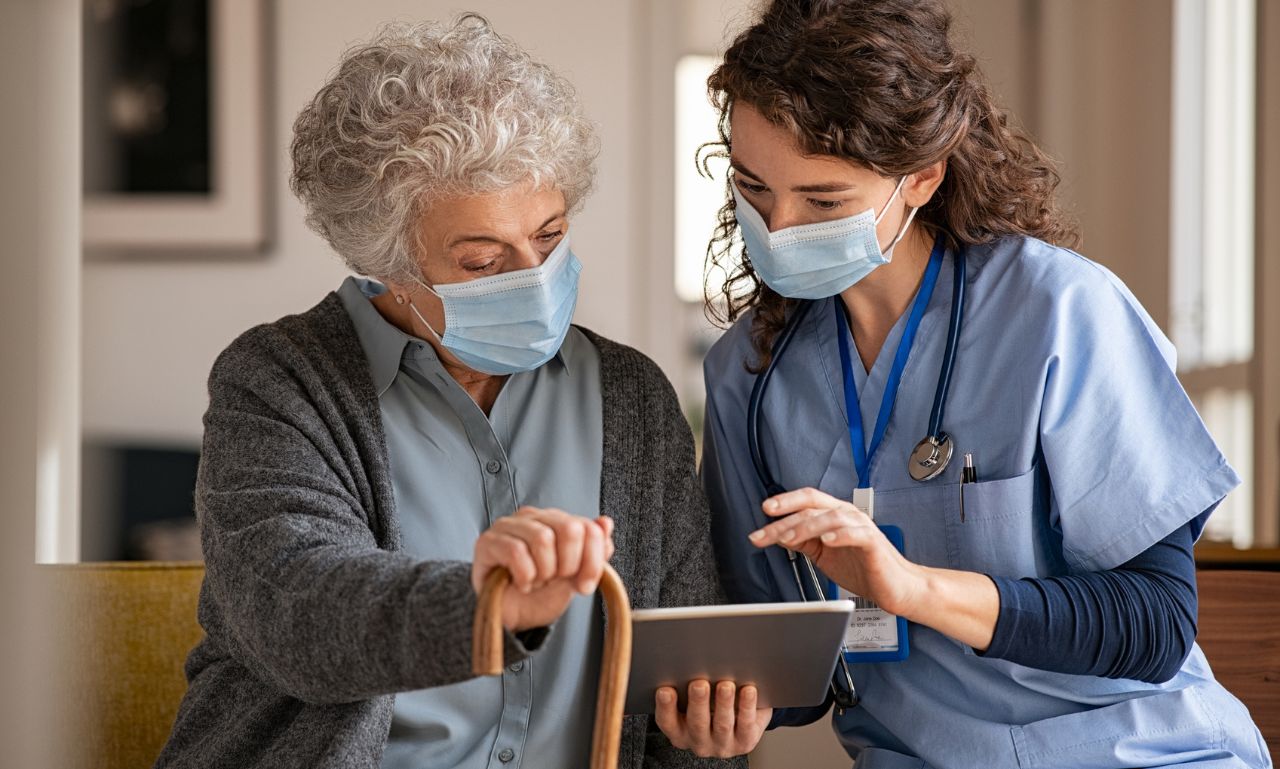HEALTH
A History of Malaria: How the Disease Has Shaped Human Civilization and Medical Science

Malaria is one of the oldest and deadliest diseases known to humanity. Over thousands of years, this mosquito-borne illness has influenced the rise and fall of empires, shaped migration patterns, and led to remarkable medical advancements. Understanding the history of malaria offers insight not only into its persistent impact on human civilization but also into the evolution of medical science in combating infectious diseases. In this article, we explore the history of malaria, tracing its influence on human history and the progress made in understanding and fighting the disease.
Early Accounts of Malaria
The history of malaria stretches back thousands of years. The disease’s symptoms were recorded as early as 2700 BCE in ancient Chinese medical texts, which referred to it as a “fever of alternating chills and heat.” The Greeks also knew of malaria, describing it in the works of physicians such as Hippocrates (circa 460-370 BCE). Hippocrates provided one of the earliest clinical descriptions of the disease, recognizing its cyclical fever pattern and associating it with the environment, particularly swampy areas.
In ancient Rome, malaria was a significant health issue, and the Romans attributed it to the miasma—or “bad air”—rising from marshes and stagnant waters. This association led to efforts to drain swamps in an attempt to reduce the disease burden. The term “malaria” itself is derived from the Italian words “mala aria”, meaning “bad air,” reflecting this early misconception about the disease’s cause.
The Impact of Malaria on Civilizations
Malaria’s impact on ancient civilizations was profound. The disease played a significant role in shaping the history of regions across the globe:
1. The Roman Empire
Malaria is believed to have contributed to the decline of the Roman Empire. The spread of the disease, particularly in areas surrounding Rome, weakened the population and affected the empire’s ability to maintain agricultural productivity and military strength. The Pontine Marshes, located near Rome, were notorious for being a breeding ground for mosquitoes, and recurring malaria outbreaks are thought to have severely impacted the health of the Roman populace.
2. Africa and the Spread of Empires
Malaria has long been endemic to sub-Saharan Africa, and its presence played a significant role in shaping African societies. The disease limited the expansion of European colonial powers into the interior of Africa for centuries, as European settlers and soldiers were highly susceptible to malaria, unlike many native populations who had developed some level of immunity. This factor, known as “Africa’s malaria barrier,” delayed European colonization and influenced the region’s history.
3. The Slave Trade and Malaria
Malaria also had a significant impact on the transatlantic slave trade. European colonizers, who suffered from malaria in the Americas, found that individuals from West Africa had some genetic resistance to the disease due to the presence of sickle cell trait. This made enslaved Africans more desirable as laborers in malaria-endemic regions, particularly in the Caribbean and the southern United States, where the disease was widespread. The slave trade thus contributed to the spread of malaria across the Atlantic, establishing the disease in new regions.
The Discovery of the Malaria Parasite and Mosquito Vector
For centuries, the true cause of malaria remained unknown, and theories about “miasmas” persisted. It was not until the 19th century that significant breakthroughs began to unravel the mystery of malaria:
1. Discovery of the Malaria Parasite
In 1880, a French army surgeon named Alphonse Laveran made a groundbreaking discovery while working in Algeria. He observed parasites inside the red blood cells of malaria patients and identified them as the cause of the disease. Laveran’s work earned him the Nobel Prize in Physiology or Medicine in 1907, marking a pivotal moment in the understanding of malaria as a parasitic disease.
2. Identification of the Mosquito Vector
The next major breakthrough came in 1897, when Sir Ronald Ross, a British physician, demonstrated that malaria was transmitted by mosquitoes. Ross discovered the malaria parasite in the stomach of an Anopheles mosquito, proving that mosquitoes were the vector responsible for transmitting the disease between humans. This discovery was crucial in developing strategies to control malaria, and Ross was awarded the Nobel Prize in Physiology or Medicine in 1902 for his work.
3. Giovanni Battista Grassi’s Contributions
Around the same time, Italian scientist Giovanni Battista Grassi also played a key role in identifying the Anopheles mosquito as the vector for malaria. Grassi’s work helped establish the lifecycle of the malaria parasite and further confirmed the role of mosquitoes in transmitting the disease. The discoveries made by Laveran, Ross, and Grassi laid the foundation for malaria prevention and control efforts.
Malaria and the Evolution of Treatment
The fight against malaria has driven significant advancements in medical science, particularly in the areas of treatment and prevention:
1. Quinine: The First Effective Treatment
Quinine, derived from the bark of the cinchona tree native to South America, was the first effective treatment for malaria. Indigenous peoples of Peru used the bark to treat fevers, and Spanish colonizers brought the remedy to Europe in the 17th century. Quinine remained the primary treatment for malaria until the development of synthetic drugs in the 20th century.
2. The Development of Synthetic Antimalarials
During World War II, the demand for effective antimalarial drugs surged, as malaria was a significant threat to soldiers stationed in tropical regions. Chloroquine, a synthetic drug, was developed during this time and became a widely used treatment for malaria. However, resistance to chloroquine eventually emerged, leading to the development of new drugs, such as mefloquine and artemisinin.
Artemisinin, derived from the sweet wormwood plant, was discovered by Chinese scientist Tu Youyou in the 1970s. Artemisinin-based combination therapies (ACTs) are now the frontline treatment for malaria, especially in areas where resistance to other drugs has developed. Tu Youyou’s discovery earned her the Nobel Prize in Physiology or Medicine in 2015.
3. Insecticides and Prevention Strategies
The discovery that mosquitoes transmit malaria led to efforts to control mosquito populations as a means of preventing the disease. Insecticides, such as DDT, were widely used in the mid-20th century to reduce mosquito populations and successfully eliminated malaria from many parts of the world, including the United States and Europe. However,
concerns about environmental impacts and the emergence of insecticide resistance led to the search for alternative methods of mosquito control, such as insecticide-treated bed nets (ITNs) and indoor residual spraying (IRS).
The Global Fight Against Malaria
The 20th and 21st centuries have seen major efforts to eradicate malaria on a global scale. Despite the challenges, significant progress has been made:
1. The Global Malaria Eradication Program
In 1955, the World Health Organization (WHO) launched the Global Malaria Eradication Program. The campaign focused on vector control, primarily using DDT, and targeted the elimination of malaria in many parts of the world. While the program succeeded in eliminating malaria from Europe, North America, and parts of Asia and Latin America, it faced challenges in sub-Saharan Africa, where logistical difficulties and limited resources hindered progress. The program was eventually abandoned in the 1970s, but it laid the groundwork for future malaria control efforts.
2. Renewed Efforts and the Roll Back Malaria Initiative
In 1998, the Roll Back Malaria (RBM) partnership was launched by the WHO, UNICEF, the World Bank, and other partners to renew efforts to combat malaria, particularly in Africa. The initiative aimed to reduce malaria morbidity and mortality through a combination of prevention, diagnosis, and treatment strategies, including the use of ITNs, IRS, and ACTs.
3. The Development of Malaria Vaccines
The development of a malaria vaccine has long been a goal of researchers, and in recent years, significant progress has been made. In 2021, the WHO recommended the use of the RTS,S/AS01 (Mosquirix) vaccine for children in sub-Saharan Africa, marking a major milestone in the fight against malaria. The vaccine provides partial protection against Plasmodium falciparum, the deadliest malaria parasite, and has the potential to save thousands of lives each year.
Malaria’s Ongoing Impact and the Future
Despite the progress made, malaria remains a major global health challenge. The disease continues to claim hundreds of thousands of lives each year, with the vast majority of deaths occurring in sub-Saharan Africa. Climate change, drug resistance, and insecticide resistance are posing new challenges in the fight against malaria, requiring innovative approaches and sustained commitment.
The history of malaria is a testament to both the resilience of human civilization in the face of adversity and the remarkable advances in medical science that have been made to combat infectious diseases. From the early recognition of malaria as a fever associated with swamps to the discovery of the malaria parasite, the mosquito vector, and the development of effective treatments, the fight against malaria has shaped the course of medical history.
Looking to the future, continued investment in research, the development of new tools—including vaccines and next-generation insecticides—and a focus on strengthening healthcare systems in malaria-endemic regions will be crucial to achieving the goal of a malaria-free world. The history of malaria is not just a story of suffering; it is also a story of human ingenuity and determination to overcome one
HEALTH
Cellulogia: Revolutionizing Modern Medicine and Research

In the ever-evolving landscape of medicine and research, innovation is key. One such groundbreaking development making waves is cellulogia. This term may sound unfamiliar to many, but it embodies a revolutionary approach that could reshape how we understand biological processes and diseases. Imagine a world where cellular behavior can be precisely manipulated to improve health outcomes or accelerate drug discovery. That’s the promise of cellulogia—an exciting frontier in modern science that holds immense potential for both researchers and patients alike.
As we delve deeper into this fascinating field, you’ll discover what cellulogia truly entails, the science propelling its advancements, and how it’s already changing lives today. Join us on this journey as we explore the remarkable impact of cellulogia on contemporary medicine and research!
What is Cellulogia?
Cellulogia is an innovative approach that focuses on cellular health and function. It merges cutting-edge technology with biological research to enhance our understanding of cells.
At its core, cellulogia examines the intricate processes within living organisms. This field studies how cells communicate, grow, and respond to environmental stimuli. By delving into these mechanisms, researchers can uncover new insights into disease treatment and prevention.
The term itself combines “cell,” representing life’s fundamental unit, with a suffix that implies study or science. It’s a fitting name for such a transformative discipline.
What sets cellulogia apart is its emphasis on real-time analysis of cellular behavior. This allows scientists to observe changes as they happen rather than relying solely on post-mortem examinations. The potential applications are vast, touching everything from regenerative medicine to cancer research.
The Science Behind Cellulogia’s Technology
Cellulogia’s technology harnesses the intricate workings of cellular biology. It focuses on understanding how cells communicate, interact, and function within various environments.
At its core, Cellulogia employs advanced imaging techniques. These methods allow researchers to visualize cellular processes in real-time. This provides a deeper insight into molecular dynamics that traditional methods often overlook.
The platform utilizes artificial intelligence to analyze vast amounts of data generated by these observations. By identifying patterns and anomalies in cell behavior, it paves the way for targeted therapeutic approaches.
Moreover, Cellulogia emphasizes collaboration between disciplines. Combining biology, engineering, and computational science fosters innovative solutions in medicine and research arenas.
This multidisciplinary approach not only enhances our knowledge of cellular mechanics but also accelerates drug development timelines significantly. The integration of diverse scientific principles makes Cellulogia a trailblazer in modern medical advancements.
Advancements in Medicine and Research with Cellulogia
Cellulogia is making waves in the medical field with its innovative approaches. By harnessing advanced cellular analysis, researchers can improve diagnostics and treatment options.
One remarkable advancement is personalized medicine. Cellulogia’s technology allows for detailed profiling of individual cells. This ensures that therapies are tailored specifically to each patient’s unique biological makeup.
Furthermore, drug development has transformed dramatically. With faster and more accurate data collection, pharmaceutical companies can streamline their research processes. The potential to identify successful compounds early enhances efficiency.
Disease modeling also benefits greatly from Cellulogia’s capabilities. Scientists can create precise models of various conditions by studying cellular interactions at a granular level. This could lead to breakthroughs in understanding complex diseases like cancer or Alzheimer’s.
The integration of AI into Cellulogia’s technology has opened new avenues for predictive analytics too, allowing for quicker interventions based on real-time data insights.
Success Stories of Cellulogia’s Impact
Cellulogia has made remarkable strides in various fields. One notable success story involves a major breakthrough in cancer research. By utilizing Cellulogia’s innovative technology, researchers were able to develop targeted therapies that significantly improved patient outcomes.
Another inspiring example comes from regenerative medicine. A recent clinical trial demonstrated how Cellulogia’s methods enhanced tissue regeneration and accelerated healing processes for patients with severe injuries.
In the realm of drug discovery, several pharmaceutical companies have reported reduced development times for new medications. They attribute this efficiency to Cellulogia’s advanced data analytics tools, which streamline complex research workflows.
Additionally, educational institutions are now incorporating Cellulogia into their curriculums, giving students hands-on experience with cutting-edge techniques. This integration is fostering a new generation of scientists eager to push boundaries and explore uncharted territories in healthcare innovation.
These stories illustrate just a fraction of the transformative potential that Cellulogia brings to modern science and medicine.
Potential Future Applications of Cellulogia
The potential future applications of cellulogia are vast and transformative. Imagine using its technology to enhance tissue engineering, creating organs that can be successfully integrated into patients without the risk of rejection. This could alleviate the chronic shortage of donor organs.
Another promising area lies in personalized medicine. By utilizing cellulogia’s capabilities, researchers may tailor treatments based on an individual’s cellular makeup, leading to better outcomes and fewer side effects.
In oncology, cellulogia might facilitate more precise targeting of cancer cells while sparing healthy tissues. This innovation could revolutionize chemotherapy protocols, making them safer and more effective.
Furthermore, advancements in regenerative medicine through cellulogia could lead to breakthroughs in healing wounds or treating degenerative diseases by regenerating damaged cells or tissues naturally.
It holds promise for developing advanced diagnostic tools that enable earlier detection of diseases at a cellular level. Such innovations would significantly improve patient care across multiple medical fields.
Criticisms and Controversies Surrounding Cellulogia
Despite its innovative approach, cellulogia faces criticism from various quarters. Skeptics argue that the technology’s claims sometimes exceed current scientific validation. They call for more robust clinical trials to substantiate its efficacy and safety.
Additionally, some experts question the ethical implications of using advanced cellular manipulation techniques. Concerns arise regarding potential misuse or unintended consequences in treatment applications.
The competitive landscape also fuels controversy. Traditional medical practitioners may feel threatened by cellulogia’s rapid rise, leading to resistance within established medical communities.
Moreover, funding disparities can skew research priorities toward more commercially viable projects rather than genuinely groundbreaking studies. This could hinder progress in understanding cellulogia’s full potential and limit accessibility for all patients.
As with any emerging technology, balancing innovation with scrutiny remains imperative as the conversation surrounding cellulogia evolves.
The Promising Future of Cellulogia in Modern Medicine and Research
Cellulogia stands at the forefront of medical innovation. Its technology has already begun to reshape how researchers and healthcare professionals approach complex biological issues.
As we delve deeper into cellular mechanics, Cellulogia offers insights that were previously unattainable. This can lead to breakthroughs in personalized medicine, allowing treatments tailored specifically for individual genetic makeups.
Moreover, its applications extend beyond human health. The technology holds potential for agricultural advancements as well. Understanding plant cells could enhance crop resilience against diseases and environmental stressors.
Research collaborations are blossoming as institutions recognize the transformative power of Cellulogia’s methods. These partnerships could catalyze discoveries that revolutionize therapies across a spectrum of conditions.
The future is bright with possibilities, paving the way for innovative solutions in managing chronic illnesses and enhancing overall wellness through advanced cellular understanding.
Conclusion
As we explore the world of Cellulogia, it becomes clear that this innovative technology is not just a fleeting trend but a significant advancement in modern medicine and research. By harnessing the intricacies of cellular structures, Cellulogia paves the way for breakthroughs in diagnostics and treatment options.
The potential applications are vast, with many industries looking to integrate its capabilities into their workflows. From personalized medicine to drug delivery systems, Cellulogia opens doors to new possibilities that could enhance patient care and improve outcomes.
However, as with any groundbreaking technology, challenges remain. Critics voice concerns about ethical considerations and the long-term implications of such advancements. Addressing these issues will be crucial for gaining broader acceptance within the scientific community.
Despite these hurdles, optimism surrounds Cellulogia’s future impact on healthcare. Each success story reinforces its significance while encouraging further research and development initiatives. With ongoing exploration into how this technology can redefine existing practices, we stand at an exciting junction in medical history where innovation meets necessity.
Cellulogia represents hope—hope for better health solutions today and tomorrow. As researchers continue their work harnessing this powerful tool, we eagerly anticipate what lies ahead in our quest for improved biological understanding and enhanced human well-being.
HEALTH
Doctiplus: The Gap Between Patients and Healthcare Providers

In today’s fast-paced world, the connection between patients and healthcare providers is often strained. Navigating through appointments, prescriptions, and health information can feel overwhelming for both sides. Enter Doctiplus—a revolutionary platform designed to bridge that gap. With its user-friendly interface and innovative features, Doctiplus aims to enhance communication, streamline processes, and ultimately improve the quality of care. Whether you’re a patient seeking clarity or a provider looking for efficiency, this tool could change the way you experience healthcare forever. Let’s dive into what makes Doctiplus a game-changer in the medical landscape!
What is Doctiplus?
Doctiplus is a revolutionary healthcare platform designed to bridge the communication gap between patients and providers. It operates as a digital space where both parties can connect effortlessly.
At its core, Doctiplus offers user-friendly features that simplify appointment scheduling, medical inquiries, and health management. Patients can easily find healthcare professionals based on their needs and preferences.
Healthcare providers benefit from streamlined patient interactions. They gain insights into patient histories, allowing for more personalized care. This leads to improved outcomes for everyone involved.
With an emphasis on accessibility, Doctiplus ensures that quality healthcare is just a tap away. The platform empowers users with tools for better decision-making regarding their health journeys. By fostering transparency and engagement, it sets the stage for enhanced overall well-being in the community.
How is the gap between patients and healthcare providers affecting the quality of care?
The gap between patients and healthcare providers has significant implications for the quality of care. When communication falters, misunderstandings arise. Patients may feel unheard or misinformed about their conditions.
This disconnect leads to a lack of trust. Without confidence in their providers, patients might delay seeking treatment or fail to adhere to prescribed plans. Their health outcomes can suffer as a result.
On the provider side, busy schedules often prevent meaningful interactions with patients. Time constraints make it challenging to address concerns fully, leaving practitioners unaware of symptoms that could indicate larger issues.
Additionally, disparities in access complicate matters further. Not all communities have equal support from healthcare systems, making it harder for some individuals to receive timely assistance.
These factors create a cycle where both parties struggle to achieve optimal health outcomes together. Bridging this divide is crucial for enhancing patient experiences and improving overall care quality.
Features and benefits of Doctiplus for patients
Doctiplus transforms the patient experience by providing easy access to healthcare services. Patients can book appointments with just a few clicks, removing the hassle of long phone calls or waiting in lines.
The platform offers personalized health information tailored to individual needs. This ensures patients receive relevant advice and resources, empowering them to make informed decisions regarding their health.
Communication is seamless within Doctiplus. Secure messaging allows patients to connect directly with their healthcare providers for quick questions or follow-ups, fostering stronger relationships.
Additionally, users appreciate the convenience of managing their medical records online. With all vital information stored securely in one place, it becomes incredibly easy for patients to track their health history and share it when necessary.
Real-time appointment reminders help keep patients on track with their care plans while reducing missed appointments significantly.
Features and benefits of Doctiplus for healthcare providers
Doctiplus offers healthcare providers a streamlined platform that enhances efficiency. It simplifies appointment management, allowing for easy scheduling and rescheduling of patient visits. This reduces no-shows and optimizes daily workloads.
The electronic health records feature ensures all patient information is securely stored and easily accessible. Providers can quickly review medical histories, lab results, and treatment plans without the hassle of paperwork.
Additionally, Doctiplus fosters better communication between staff members. Internal messaging systems enable real-time collaboration on patient care, improving response times during critical situations.
Analytics tools provide valuable insights into practice performance. Healthcare professionals can track metrics like patient satisfaction or treatment outcomes to refine their services continuously.
Doctiplus supports telemedicine capabilities, expanding access to care while accommodating patients’ busy schedules. This flexibility not only attracts more patients but also helps improve overall health outcomes in the community.
The future of healthcare with Doctiplus
The future of healthcare is poised for transformation with Doctiplus. This innovative platform bridges the gap between patients and providers, fostering a more cohesive healthcare experience.
With advanced technology at its core, Doctiplus enhances communication. Patients can easily reach out to their healthcare teams, ensuring timely responses and personalized care plans.
Data analytics play a crucial role in this evolution. By leveraging patient data, providers can make informed decisions that improve treatment outcomes. Predictive analytics might even anticipate health issues before they arise.
Telemedicine integration allows flexibility in consultations. Patients no longer need to travel long distances for specialized care; instead, virtual appointments bring experts right into their homes.
As we look ahead, initiatives like Doctiplus are set to redefine accessibility and convenience in healthcare delivery—creating an environment where well-being thrives for everyone involved.
Success stories and user reviews
Doctiplus has transformed the way patients and healthcare providers interact. Many users have shared their experiences, highlighting significant improvements in communication.
Patients appreciate the seamless appointment scheduling feature. One user noted how easy it was to book a consultation without long phone calls or waiting on hold. They felt empowered to manage their own healthcare journey effectively.
Healthcare providers also report positive changes. A clinic manager mentioned increased patient engagement through reminders and follow-ups via Doctiplus. This has led to fewer missed appointments and improved patient outcomes.
Another testimonial praised the user-friendly interface, making it accessible for people of all ages. It’s clear that both patients and providers find value in this platform, enhancing the overall experience within the healthcare landscape.
These stories showcase real-life impacts of Doctiplus, illustrating its role as a vital bridge between two important parties in health management.
How to get started with Doctiplus
Getting started with Doctiplus is straightforward and user-friendly. Begin by visiting their official website or downloading the mobile app.
Once there, you can create your account in just a few minutes. Fill out your profile with essential information like your medical history and preferences.
After setting up your account, explore the platform’s features tailored for both patients and healthcare providers. Take advantage of appointment scheduling tools to book visits at times that suit you best.
Make sure to browse through educational resources available on the platform as well. They provide valuable insights into various health topics.
If you’re a healthcare provider, take some time to customize your practice’s profile and services offered. This helps attract more patients looking for specific treatments or expertise within their area.
Don’t hesitate to reach out for support if any questions arise during setup; there are helpful resources ready to assist you along the way.
Conclusion
The healthcare landscape is evolving rapidly, and platforms like Doctiplus are paving the way for a more efficient connection between patients and providers. By bridging the gap that has long existed in communication and accessibility, Doctiplus enhances the quality of care for everyone involved.
Patients can enjoy seamless access to healthcare information, while providers can streamline their services to focus on what matters most – patient care. The future of healthcare looks promising with innovative solutions like Doctiplus leading the charge.
Whether you’re seeking better health management options or aiming to provide top-notch care as a provider, Doctiplus offers tools designed specifically for your needs. Embrace this shift towards improved healthcare experiences today by exploring what Doctiplus has to offer.
HEALTH
6 Tips For Monitoring Senior Blood Pressure During Flu or Infection

When seniors catch the flu or another infection, their bodies face extra stress. This stress can affect many areas of health, but blood pressure is one of the most important to watch. Blood pressure can fluctuate depending on factors such as fever, dehydration, or certain medications. That’s why family members and caregivers need to pay attention.
Monitoring blood pressure helps prevent more serious problems, such as fainting, stroke, or heart strain. Even a minor infection can cause significant changes in older adults. Simple daily checks can make a difference.
This article shares six practical tips for monitoring senior blood pressure during the flu or an infection. Each one is easy to follow and helps protect overall health.
1. Check Blood Pressure at the Same Time Every Day
For older people, routine is quite important. Blood pressure can vary at different times of the day. For instance, morning readings may differ from evening readings. By checking at the same time every day, you can observe fundamental changes rather than just averages.
Choose when things are calm, such as before breakfast or after a nap. This makes it easy to see how the infection is affecting the body. Seniors can also recall when to check if the schedule is easy to follow.
Regular timing makes it easier for doctors to understand results. It also helps address common concerns, such as “Is blood pressure higher when seniors are sick?”, by showing whether changes are due to illness or just standard daily patterns.
2. Use an Easy-to-Read Digital Monitor
When elders have the flu or an illness, they may feel weak or weary, and using complicated tools can make things even more stressful. The best digital blood pressure monitor typically features a large screen. These devices make it easy to see numbers and reduce errors.
Aside from that, pick one with a cuff that fits snugly around the arm. You can also get wrist devices, although arm monitors are usually more accurate. Some monitors also keep track of past readings, which makes it easy to track changes.
Both seniors and caregivers feel good about using the technology when it is easy to use. Getting accurate readings provides you with peace of mind and enables you to make more informed treatment decisions.
3. Keep a Written or Digital Log of Results
Numbers matter only if you can compare them. That’s why it’s important to record blood pressure results each time you check. You can use a notebook, a printed chart, or even a phone app.
A log lets you see patterns, such as how pressure increases when you have a fever and decreases when you don’t want to eat. Providing this record to a doctor provides them with helpful information. Then, doctors can adjust the medicine or suggest alternative treatments for the problem.
Writing things down also makes things less confusing. It stops you from making blunders like forgetting to read or getting numbers mixed up. A basic log tells a clear story about your health.
4. Watch for Sudden Changes, Not Just High Numbers
Many people focus only on high blood pressure. However, abrupt decreases can be just as harmful when you have the flu or another illness. If your blood pressure is low, you can feel dizzy, faint, or weak. This makes it more likely that people may fall and get hurt.
Check for readings that are considerably different from what you usually see. If blood pressure usually hovers around 130/80 but suddenly lowers to 100/60, that could be a problem.
It’s essential to consider how the senior feels, not just the numbers. If they experience dizziness, confusion, or exhaustion, check their blood pressure immediately and seek medical attention.
5. Stay Alert for Dehydration Effects
Fever, sweating, vomiting, or diarrhoea are common symptoms of the flu and other diseases. These can easily make older people dehydrated. Dehydration can cause blood pressure to drop and harm the kidneys.
To prevent this from happening, encourage them to drink small amounts of water or clear beverages throughout the day. You may also find that soup, herbal tea, or liquids with electrolytes are helpful. Avoid drinks that contain a high amount of sugar, as they may not provide as much relief.
6. Know How Medications Affect Blood Pressure
Seniors may need to take more drugs, including antibiotics, cough syrup, or pain relievers, when they are sick. Some of these can cause blood pressure to rise or fall. When ill, even regular blood pressure medications can work differently.
That’s why it’s essential to read the labels and follow the directions. If you see numbers changing in strange ways after starting a new medicine, write them down. Tell the doctor or pharmacist about this.
Never stop or adjust your medication without consulting a doctor first. Instead, ask if changes are necessary. Knowing how medications work helps keep older adults safe and avoid confusion.
Conclusion
One of the best methods to stay healthy is to monitor your senior’s blood pressure closely when they have the flu or an infection. Simple things you do every day, such as keeping track of figures on a digital monitor, writing them down, and looking for sudden changes, can help you avoid significant problems.
Don’t forget that it’s not just about the numbers. Low readings, dehydration, and the effects of drugs are just as critical. Above all, be calm, stick to your routines, and consult a doctor if you’re unsure.
You can help seniors get better safely by following these six tips.
-

 TECHNOLOGY4 months ago
TECHNOLOGY4 months agoTop 10 Must-Read Stories from Kristen Archives You Can’t Miss
-

 TECHNOLOGY10 months ago
TECHNOLOGY10 months agoSky Bri Net Worth Revealed: How She Built Her Financial Empire
-

 TOPIC12 months ago
TOPIC12 months agoBasement Renovation Contractors: How They Tackle Structural Issues During Renovations
-

 TOPIC7 months ago
TOPIC7 months ago5 Reasons the //Vital-Mag.Net Blog Dominates Lifestyle
-

 TOPIC5 months ago
TOPIC5 months agoTop 10 Articles from the ://Vital-Mag.net Blog That You Can’t Miss
-

 CRYPTO8 months ago
CRYPTO8 months agoCrypto30x.com Review: Is It the Right Platform for You?
-

 BUSINESS4 months ago
BUSINESS4 months agoTraceLoans Explained What You Need to Know
-

 ENTERTAINMENT2 months ago
ENTERTAINMENT2 months agoNHentai.NEF: Navigating the Popular Hentai Archive with Ease

